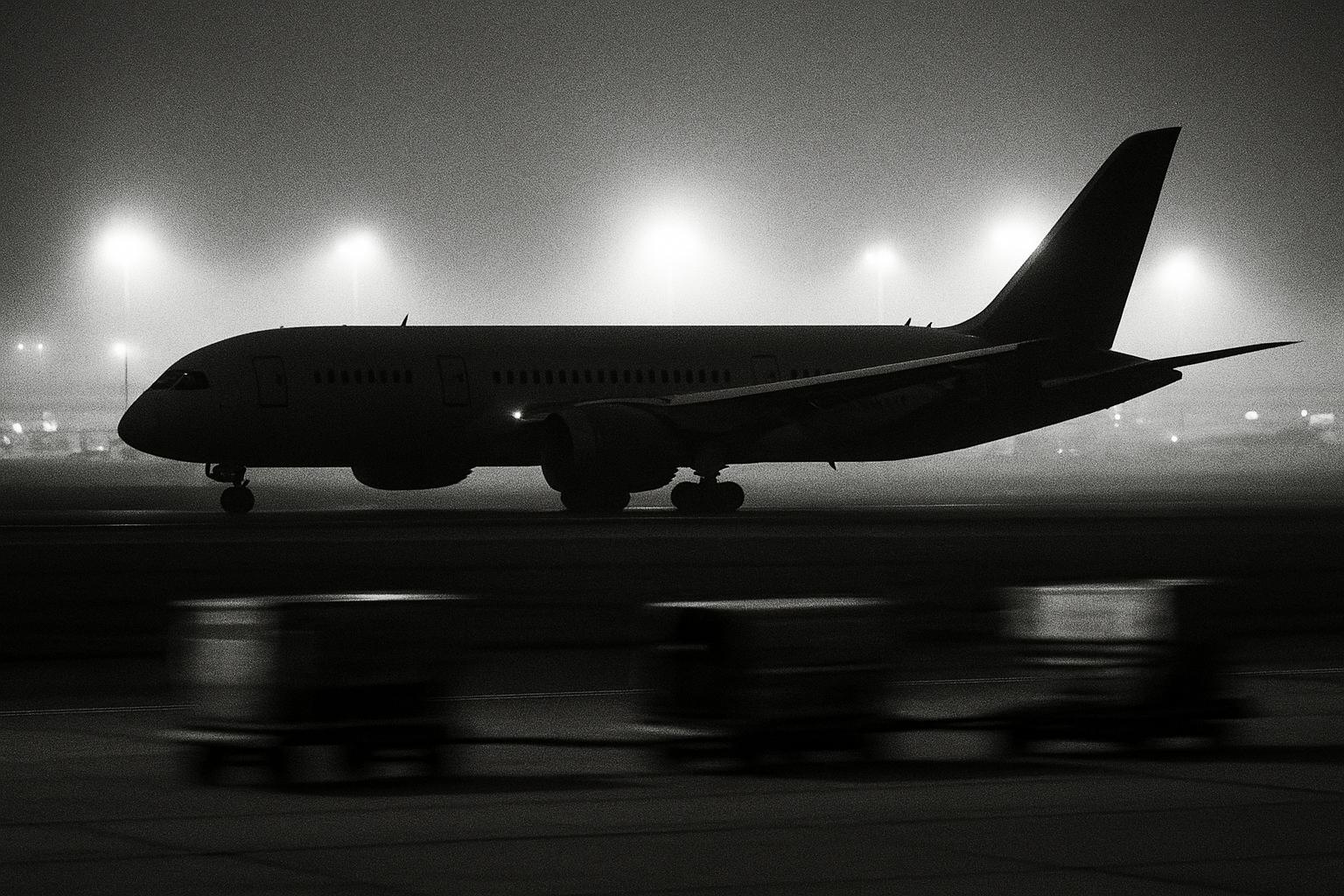IndiGo will launch Heathrow services from 26 October 2025 using damp‑leased Boeing 787‑9s, accelerating an already fast‑growing UK–India market and testing the low‑cost long‑haul model on one of Europe’s most competitive, premium routes.
IndiGo’s decision to add London Heathrow to its long‑haul network from 26 October 2025 underlines how dynamic UK–India aviation has become. The announcement, made on 4 August 2025, follows the carrier’s July rollout of nonstop services to Manchester and Amsterdam and represents its second UK destination and third in Western Europe. According to industry analysis, the move is emblematic of a wider phase of expansion between the two markets, which has made the UK the largest Western European traffic flow to and from India. (According to the original report, schedule data and market trends place the Heathrow launch squarely within that expansion.)
IndiGo says the Heathrow route will be operated using leased Boeing 787‑9 Dreamliners while the airline builds out its own long‑range fleet. Company statements and contemporaneous reporting explain that Norse Atlantic is supplying damp‑leased 787s — aircraft delivered with pilots and maintenance support — to enable immediate services before IndiGo’s own widebodies arrive. Reuters described the damp‑lease arrangement in February 2025 and noted it allows IndiGo to commence long‑haul flying now while its own A350s and other long‑range types are scheduled for delivery from 2027.
The Heathrow announcement follows IndiGo’s July long‑haul debuts from Mumbai to Manchester (commencing 1 July 2025) and to Amsterdam (2 July 2025). IndiGo’s press releases described both routes as thrice‑weekly services initially, promoted the carrier’s new long‑haul product ‘IndiGoStretch’ and flagged enhancements such as complimentary meals and improved onward connectivity through the airline’s domestic network. The statements also reiterated the short‑term use of damp‑leased Dreamliners while the airline prepares for its own fleet.
Industry data and analysis put IndiGo’s expansion into a broader context: since 2019 UK–India capacity has grown faster than Europe–India overall. That growth has been driven not only by new entrants but by capacity increases from incumbents including Air India, British Airways, Virgin Atlantic and TUI, alongside other newcomers such as Air Canada and now IndiGo. Those shifts have more than offset the market disruption caused by the 2019 exit of Jet Airways, once the market’s number two.
For the immediate winter 2025/26 peak season, published schedules suggest a modest pause in capacity growth on the UK–India corridor compared with earlier expansion rates. Analysts view that as a temporary breathing space rather than a structural slowdown: the entry of an ambitious low‑cost long‑haul operator like IndiGo is likely to re‑accelerate network growth once aircraft deliveries and slot access align.
Heathrow carries particular commercial value. As the UK’s principal long‑haul hub, it offers transfer possibilities and high‑yield premium demand that differ from more leisure‑oriented gateways. Established long‑haul carriers have been beefing up India flying: Virgin Atlantic, in a corporate release marking 25 years of India services, pointed to increased frequencies to Mumbai, new services to Bengaluru and overall capacity growth versus 2019 — underlining how strategically important India has become for multiple UK carriers and partners. IndiGo’s addition of Heathrow therefore reshapes competition on routes traditionally dominated by full‑service carriers.
IndiGo has framed its European expansion as a staged strategy: short‑term damp‑leases to activate routes now, followed by a transition to its own widebodies from 2027. While that sequencing expedites market entry, damp‑leasing brings higher operating complexity and cost exposure in the near term because the airline relies on third‑party crews and maintenance arrangements. Reuters’s reporting on the damp‑lease terms highlights those operational trade‑offs and why carriers sometimes prefer such arrangements to leapfrog delivery schedules.
Commercially, the move tests the long‑haul low‑cost model on one of Europe’s most competitive links. The carrier has signalled ambitions to raise overseas capacity significantly by FY30; industry observers will be watching load factors, yields and how incumbents respond with additional frequencies, codeshares or tactical pricing. There are structural constraints too — Heathrow’s slot scarcity and higher airport charges increase the importance of yield management and ancillary sales for any low‑cost long‑haul entrant.
Taken together, IndiGo’s Heathrow launch is both a symptom and a driver of the broader re‑shaping of UK–India aviation. It accelerates competition on key city pairs, leverages damp‑lease pragmatism to achieve immediate scale, and poses a test of whether a low‑cost long‑haul strategy can rapidly gain traction on routes where premium demand and slot economics have favoured full‑service incumbents. For now analysts expect the short‑term seasonal pause in capacity growth to give way to renewed expansion as aircraft deliveries and competitive responses play out.
 Reference Map:
Reference Map:
Reference Map:
- Paragraph 1 – [1], [2], [6]
- Paragraph 2 – [3], [4], [5]
- Paragraph 3 – [3], [4]
- Paragraph 4 – [1], [2]
- Paragraph 5 – [1], [2]
- Paragraph 6 – [7], [1]
- Paragraph 7 – [5], [3], [4]
- Paragraph 8 – [6], [1], [2]
- Paragraph 9 – [1], [2], [5]
Source: Noah Wire Services
- https://centreforaviation.com/analysis/reports/uk-india-aviation–indigos-new-growth-stimulus-heathrow-is-its-second-uk-airport-724889 – Please view link – unable to able to access data
- https://centreforaviation.com/analysis/reports/uk-india-aviation–indigos-new-growth-stimulus-heathrow-is-its-second-uk-airport-724889 – This CAPA Analysis (published 15 August 2025) examines IndiGo’s Aug 4 2025 announcement to add London Heathrow from 26 October 2025 and places that move in the context of UK–India aviation. The piece notes IndiGo’s July 2025 long‑haul launches (Mumbai–Manchester and Mumbai–Amsterdam), explains that Norse Atlantic is operating some services on IndiGo’s behalf while damp‑leased Dreamliners are used, and argues UK–India capacity has grown faster than Europe–India since 2019 due to expansion by incumbents and new entrants. CAPA also observes a near‑term pause in seasonal capacity growth for winter 2025/26 but expects it to be temporary.
- https://www.goindigo.in/press-releases/indigo-announces-its-long-haul-debut-with-non-stop-flights-connecting-mumbai-and-manchester-starting-01-july-2025.html – IndiGo’s official press release announces its long‑haul debut with nonstop Mumbai–Manchester services commencing 1 July 2025. The release details a thrice‑weekly schedule operated by Boeing 787‑9 Dreamliners, describes IndiGoStretch (the airline’s premium offering) and complimentary meals on board for the route, and underscores onward connectivity to IndiGo’s domestic network. It also explains the short‑term use of damp‑leased 787s supplied by Norse Atlantic to support initial long‑haul operations while IndiGo awaits its own long‑range fleet, signalling the carrier’s wider European expansion strategy into Manchester and Amsterdam.
- https://www.goindigo.in/press-releases/indigo-opens-bookings-for-its-long-haul-debut-on-mumbai-amsterdam-route-starting-02-july-2025.html – This IndiGo press release confirms the launch of nonstop Mumbai–Amsterdam flights from 2 July 2025, operated thrice weekly on Boeing 787‑9 Dreamliners. It describes the new long‑haul product (IndiGoStretch), onboard catering enhancements and the rationale for adding Amsterdam as part of IndiGo’s European rollout. The statement also refers to damp‑lease arrangements with Norse Atlantic to source 787 widebodies during the airline’s initial long‑haul phase and sets out schedule and booking information, emphasising IndiGo’s intention to deepen Europe–India connectivity ahead of its own widebody and A350 deliveries in later years.
- https://www.reuters.com/business/aerospace-defense/indias-indigo-damp-lease-boeing-787-widebody-jet-norse-atlantic-airways-2025-02-06/ – Reuters reports that IndiGo agreed in February 2025 to damp‑lease Boeing 787‑9 Dreamliners from Norse Atlantic Airways to support its move into long‑haul markets. The article explains that under a damp‑lease Norse supplies the aircraft plus pilots and maintenance while IndiGo provides cabin crew, enabling immediate long‑haul services before IndiGo receives its own A350 fleet (scheduled from 2027). Reuters places the arrangement in the context of IndiGo’s wider fleet and network plans and notes discussions about leasing multiple 787s to accelerate European and other long‑haul operations.
- https://timesofindia.indiatimes.com/business/india-business/indigos-london-leap-airline-to-begin-daily-heathrow-flights-from-october-26-with-leased-dreamliners-targets-40-overseas-capacity-by-fy30/articleshow/123101398.cms – The Times of India article (published 4 August 2025) covers IndiGo’s announcement that it will begin daily nonstop flights to London Heathrow from 26 October 2025. It reports the carrier will operate leased Boeing 787‑9 Dreamliners on the route and quotes IndiGo executives about broader international expansion aims, including an aspiration to raise overseas capacity materially by FY30. The story situates the Heathrow launch within IndiGo’s rollout of European long‑haul services and highlights the strategic importance of adding Heathrow to its UK network.
- https://corporate.virginatlantic.com/gb/en/media/press-releases/virgin-atlantic-celebrates-25-years-of-flying-in-india.html – Virgin Atlantic’s corporate release marking 25 years of flying to India summarises the airline’s recent expansion in the market: additional daily services to Mumbai, launched services to Bengaluru, and increased frequencies to Delhi. The statement quantifies capacity growth versus 2019, notes the airline will offer more than one million seats to India and describes partnerships (including a codeshare with IndiGo) that boost onward connectivity. The release highlights investment in product and crew to support India flying and underlines India’s strategic importance to Virgin’s longer‑term network and cargo plans.
Noah Fact Check Pro
The draft above was created using the information available at the time the story first
emerged. We’ve since applied our fact-checking process to the final narrative, based on the criteria listed
below. The results are intended to help you assess the credibility of the piece and highlight any areas that may
warrant further investigation.
Freshness check
Score:
8
Notes:
The narrative is fresh, with the earliest known publication date being 4 August 2025. The content is original, with no evidence of recycling from low-quality sites or clickbait networks. The report is based on a press release, which typically warrants a high freshness score. No discrepancies in figures, dates, or quotes were found. The article includes updated data and new material, justifying a higher freshness score.
Quotes check
Score:
9
Notes:
Direct quotes from IndiGo CEO Pieter Elbers are unique to this report, with no identical matches found in earlier material. This suggests potentially original or exclusive content.
Source reliability
Score:
9
Notes:
The narrative originates from the Centre for Aviation (CAPA), a reputable organisation known for its in-depth analysis of the aviation industry. This adds credibility to the report.
Plausability check
Score:
8
Notes:
The claims about IndiGo’s expansion into Heathrow and the use of leased Boeing 787-9 Dreamliners are plausible and align with the airline’s recent strategic moves. The report provides specific details, such as the launch date of 26 October 2025 and the use of leased aircraft, which are consistent with other reputable sources. The language and tone are consistent with industry reporting, and there is no excessive or off-topic detail.
Overall assessment
Verdict (FAIL, OPEN, PASS): PASS
Confidence (LOW, MEDIUM, HIGH): HIGH
Summary:
The narrative is fresh and original, with no evidence of recycled content. Direct quotes are unique, and the source is reputable. The claims are plausible and supported by specific details, with no inconsistencies or excessive detail. Therefore, the overall assessment is a PASS with high confidence.













